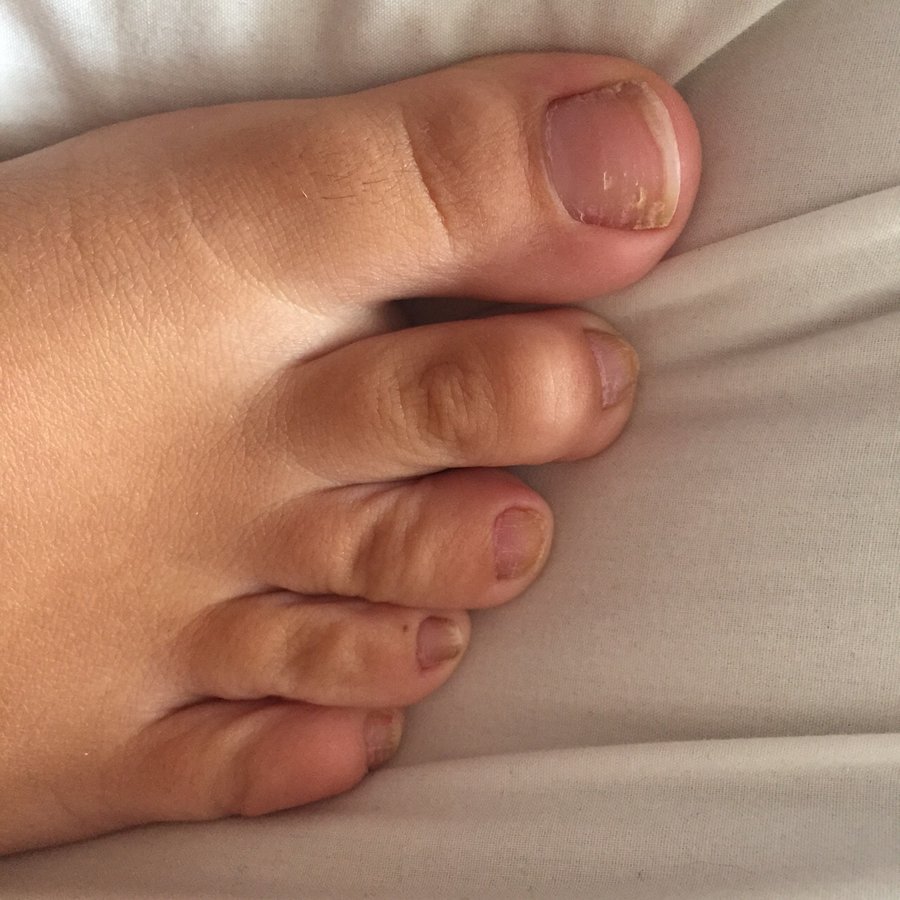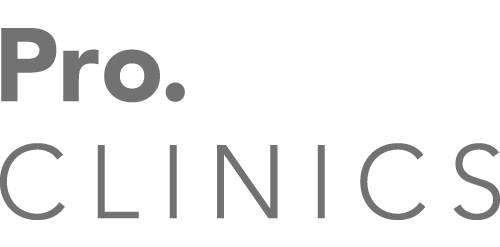Laser toenail fungal treatment in Bristol
£60 per hand / foot per session.
Why choose Pro. Clinics for laser toenail fungal treatment?
If you suffer from toenail fungus then you will know only too well how difficult it is to cure. There is a multitude of different treatments available including anti-fungal tablets (which can be very harmful to the liver) as well as treatments such as lacquers that are painted directly onto the nail. Sadly a lot of these treatments are very ineffective and often require regular applications over a long period of time.
Pro. Clinics have successfully treated many cases of toenail fungus using our advanced laser treatment, and frequently achieve incredible results where all other treatments have failed. That said, we are always completely honest with people and let them know that results are not guaranteed. Toenail fungus is a notoriously difficult condition to cure but even so, we still maintain a success rate of around 70-80{f1dc52713b717146297c360d87e9dae2011db7316e64ae6707d71ba8b1aca4e0}.
The process is very quick and only takes around 5 minutes per foot. It is also almost painless. Most people will require 3 sessions of laser toenail fungal treatment spaced a month apart, although sometimes results will be seen after just one session. Once the laser has destroyed the bacteria that causes the fungal infection, the nail begins to grow out free of infection, although this can be a slow process and often takes up to a year.

Laser Toenail Fungal Treatment FAQs
Fungal toenail infections can be a difficult and stubborn condition to treat. Historically treatments have involved prescription only anti-fungal tablets, which were very harmful to the liver, or treatments such as paint on lacquers, which had poor results and required regular application over a long period of time. Many people have even resorted to home remedies, such as applying vinegar to the infected nails, with sadly all too predictable results.
Luckily, these ineffective treatments are now a thing of the past with the availability of modern Nd Yag laser systems. The application of the powerful laser destroys nail fungal infections quickly, painlessly and effectively. Once the fungal infection has been destroyed, the damaged nail is free to grow normally and the old damaged nail will grow out, clear of infection, typically within 6-9 months.
Diagnosing a fungal infection is not as straightforward as many people think. A specialist will need to examine your nails and may take nail clippings or scrapings to send away to a laboratory, to identify the type of fungus causing the fungal nail infection.
One of the reasons that a diagnosis is not always easy is because other conditions, such as psoriasis, can look very similar to a fungal nail infection. Microorganisms such as yeast and bacteria are also known to infect nails. Knowledge is power and knowing the cause of the infection helps to determine the best possible course of treatment.
We are often asked, is a fungal nail infection the same as athlete’s foot? It is similar, in the fact that it is a fungal infection, but it is in fact a different type of infection. Another question that we are asked is can fingernails also become infected? Fungal nail infections are very contagious and sadly they can occasionally spread to the fingernails.
There are many treatments and products available over the counter that are designed to destroy toenail fungus (onychomycosis). There are also many different home remedies that people try, including apple cider vinegar. The vinegar can be used topically as a foot soak, or internally. Tea tree oil is another example of a popular home remedy, as both an antiseptic and a fungicidal remedy. The best way of using this product is by first cleaning the areas on and around the infection and then applying undiluted 100{f1dc52713b717146297c360d87e9dae2011db7316e64ae6707d71ba8b1aca4e0} pure tea tree oil directly onto the infected nails and letting it soak in. After leaving the mixture on the nails for around ten minutes, gently scrub the nail with a soft toothbrush. There are many more home remedies available, although in our experience many of them are sadly ineffective due to toenail fungus being such a stubborn and difficult condition to treat.
Treating a fungal nail infection using a Q Switched Nd Yag laser is a very safe and effective process. The light from the laser penetrates safely through the nail and soft tissue to destroy the bacteria living under the nail that is causing the fungal infection. Once the fungal infection has been treated by the laser, healthy nails begin to grow from the cuticle of the nail. This method involves infrared radiation which is not painful and is very safe.
There are many benefits of having a laser fungal treatment. Firstly, there are the cosmetic advantages. Lets face it, toenail fungus is a nasty looking condition and does not look attractive. This is a big disadvantage, especially in the summer months when people are wanting to wear flip-flops and open toed sandals. Secondly, the condition is highly contagious, so by clearing the fungal infection, there is a much lesser chance that you will pass the infection on to friends and family members.
Generally speaking, unless the fungal infection is particularly troublesome, the treatment will not be covered by the NHS, as it is deemed as a cosmetic concern and is is not dangerous.
If the infection is particularly bad, your GP can prescribe antifungal tablets, although they generally do not like doing so due to the number of adverse side effects associated with the medication. You will need to take these tablets every day for up to 6 months. As previously mentioned, there are various nasty side effects that you will need to be aware of before starting the treatment, these include headaches, itching, loss of taste and diarrhea.
You also can’t take antifungal tablets if you’re pregnant or have certain pre-existing conditions, as they can damage your liver.
Occasionally, badly infected nails will need to be removed. This is a minor procedure carried out while the area is numbed (under local anaesthetic).
Unfortunately laser fungal treatment is not currently covered by the NHS.
The treatment is very quick and simple and most people are in and out of the clinic in just a few minutes.You will first need to ensure that the nails are cut as short as possible and, if thickened due to the infection, have been thinned out using a file. The clinician will then pass the laser over the infected nails several times using different frequencies to ensure that the bacteria causing the fungal infection has been destroyed. Once the treatment has been completed, you are free too resume everyday activities.
At Pro. Clinics, we recommend that clients commit to a minimum of three sessions, spaced around a month apart. Although this treatment does not work in all cases, there is around a 70-80{f1dc52713b717146297c360d87e9dae2011db7316e64ae6707d71ba8b1aca4e0} success rate.
Fungal nail infections often develop when your feet are constantly warm and damp. You are far more likely to pick up an infection if you wear trainers for a long period of time and have hot, sweaty feet.
Below we have created a list of Do’s and Don’ts for you to follow to help prevent fungal nail infections:
- Do treat athlete’s foot as soon as possible to avoid it spreading onto nails.
- Do keep your feet as clean and dry as possible.
- Do wear clean dry socks every day.
- Do wear flip flops in public showers, such as the gym, or pool.
- Do sprinkle athletes foot powder in you socks every day.
- Do ensure that your nail clippers are sterile.
- Do spray anti-fungal / anti-bacterial spray in your shoes and slippers.
- Do not wear shoes that make your feet excessively hot and sweaty.
- Do not share towels with friends or family.
- Do not share nail clippers with friends or family.
- Do not wear other people’s shoes.
- Do not touch your toenails with your fingers.
The treatment is considered to be safe with no known side effects.
As previously mentioned in our list of Do’s and Don’ts, there are various steps to follow after you have had your laser fungal nail treatment. You should ensure that the socks that you put on after the treatment are clean and have had athletes foot powder sprinkled into them. You should also make sure that when you come to cut your nails, the nail clippers or scissors that you use are sterile. Also make sure that you have sprayed an anti fungal / anti bacterial spray into your shoes.

